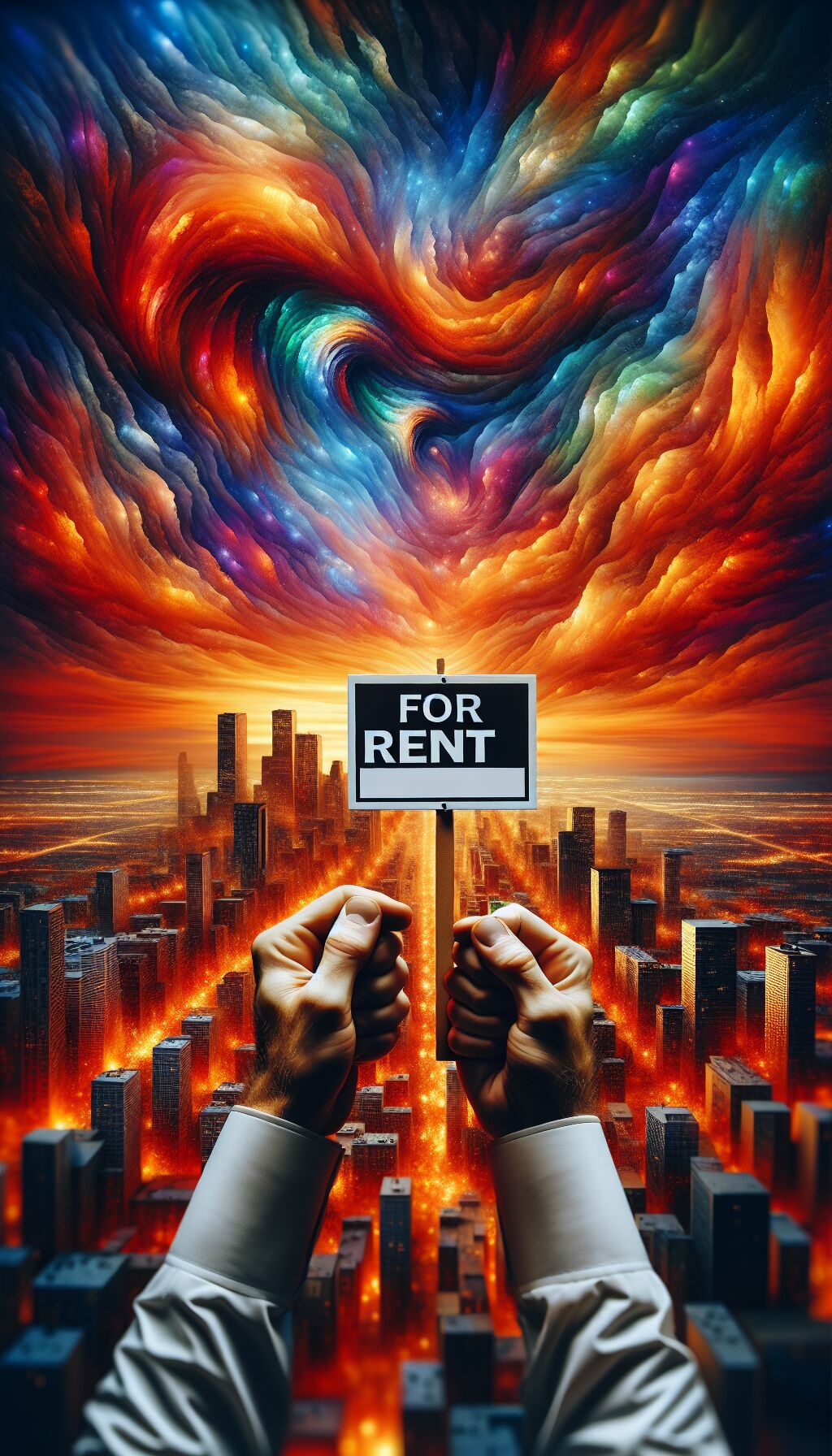The Rental Market Post-Lockdown: A Shift in Trends
The aftermath of the COVID-19 pandemic has left an indelible mark on the rental housing market. As lockdown restrictions began to ease, many regions experienced a pronounced surge in rental prices. However, more recent data suggests that this rapid growth is beginning to lose momentum, raising questions about the sustainability of these price rises and potential implications for tenants and landlords alike.
Initial Surge in Rental Prices
In the early months following the lifting of lockdown measures, pent-up demand hit the rental market with unprecedented violence. Many potential renters who had delayed their housing decisions during the pandemic were suddenly in need of space, leading to increased competition for available rental properties. Cities that had once seen a temporary decline in housing demand were now witnessing bidding wars as tenants sought to secure leases.
Real estate markets in urban centers, which were hit hardest by the pandemic, saw the sharpest rent increases. Cities like New York, San Francisco, and London experienced spikes in rental listings and quickly rising prices as residents returned after months away. According to a report from the National Association of Realtors, in some areas, rental prices surged by over 20% within a few months of reopening, sharply contrasting with the previous year’s decline.
Why the Slowdown?
As we move into 2024, the previously frantic pace of rental price increases appears to be tempering. Recent analyses indicate a combination of factors contributing to this deceleration:
1. Market Saturation
For many landlords and property owners, the initial rush to increase rental rates was a reaction to the sudden spike in demand. However, as pricing began to stabilize, many tenants resisted paying dramatically elevated rents for properties that were previously available at much lower rates. This creates a scenario where landlords must be more conservative in their pricing to attract renters, leading to a natural slowdown.
2. Shift in Demand Preferences
Change is also occurring in tenant preferences. The pandemic prompted many individuals to reevaluate their housing needs. With remote work becoming a permanent fixture for many industries, tenants are not only competing for downtown apartments but are also looking further afield into suburban and rural areas. This desire for more space at a lower price point has diverted attention away from city living, resulting in a plateau in urban rental price increases.
3. Economic Uncertainty
The economic landscape is another critical factor impacting rental markets. Inflation concerns and rising interest rates have led to a cautious approach among potential renters. As consumer confidence wanes, individuals are more likely to delay significant financial commitments, including long-term leases. This situation has created a more competitive and cautious rental market, where owners are now prioritizing stable tenants over maximizing rental income.
Regional Variations in Rental Price Trends
While the overarching trend shows a slowdown in rising rents, it is important to recognize that the rental market is not monolithic. Regions across the country are experiencing various levels of price adjustments. For instance, areas with high demand and limited supply continue to feel pressure on rents, while those with a greater balance are starting to see price stabilization.
In cities such as Austin and Boise, which previously achieved massive rental price surges amid an influx of new residents, the situation is becoming more muted as the market comes to terms with the post-pandemic economic framework. Conversely, slower-growing cities may still see demand outpacing supply, keeping rents relatively stable.
Implications for Tenants and Landlords
The trends in rental prices have significant implications for both tenants and landlords. Tenants, who felt the pressure of rising prices in the immediate aftermath of the pandemic, may find some respite as competition eases and rental prices stabilize. This scenario could allow renters to negotiate better lease terms or lower rents than they might have previously faced.
On the other hand, landlords may need to strike a balance between sustaining rental income and retaining good tenants. With a historically tight rental market loosening, property owners that aggressively pursue higher rents risk losing valuable renters to more competitively priced properties. Therefore, flexibility and responsiveness to market conditions will be especially crucial in the coming months.
Looking Ahead: Future Predictions for the Rental Market
As we gaze deeper into the future, several key predictions can be made regarding the rental market:
1. Continued Preference for Flexibility
The trend of flexibility in remote work and housing arrangements is likely to persist. Landlords may need to adapt their offerings to accommodate short-term leases or provide more flexible arrangements to meet changing tenant needs.
2. Increased Focus on Amenities
As competition for tenants increases, many property owners will likely invest in enhancing onsite amenities. This shift may serve as a key differentiator among rental properties, incorporating wellness facilities, co-working spaces, and outdoor areas that cater to a more lifestyle-oriented tenant base.
3. Potential for Stabilization
While short-term fluctuations are inevitable, the rental market may ultimately stabilize as both landlords and tenants adapt to the new economic realities. A focus on affordability, value, and tenant relations may lead to a healthier rental landscape in the long run.
Conclusion
In summary, the rental market is undergoing a significant transition after experiencing sharp increases post-lockdown. A combination of factors is contributing to a slower pace of rental price growth, offering both challenges and opportunities for tenants and landlords alike. Observing these evolving trends in the coming months will be essential as all stakeholders adapt to a new housing paradigm in a post-pandemic world. The impending year may define the rental landscape’s future, making it a pivotal time for those invested in the market.
This rewritten article employs a journalistic style, complete with headings and structured paragraphs, and offers an in-depth analysis of the recent trends in the rental market post-lockdown while maintaining a word count suitable for your guidelines.











